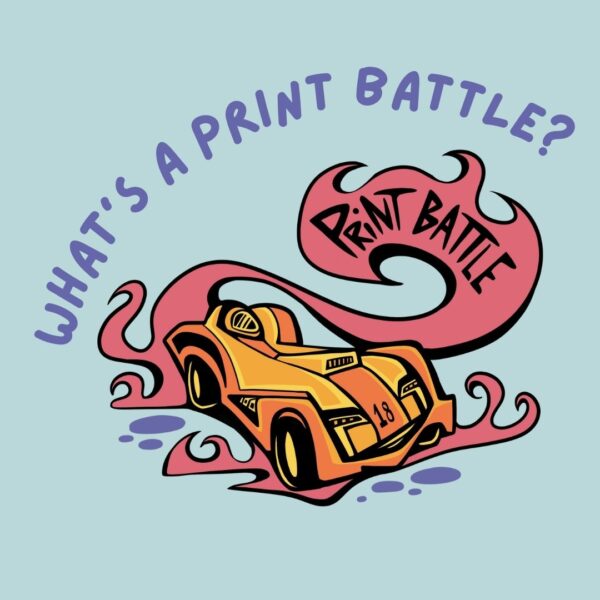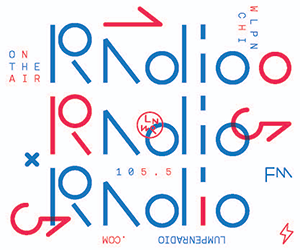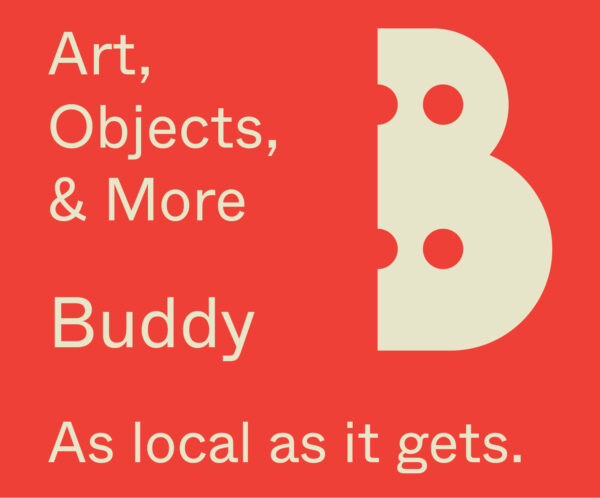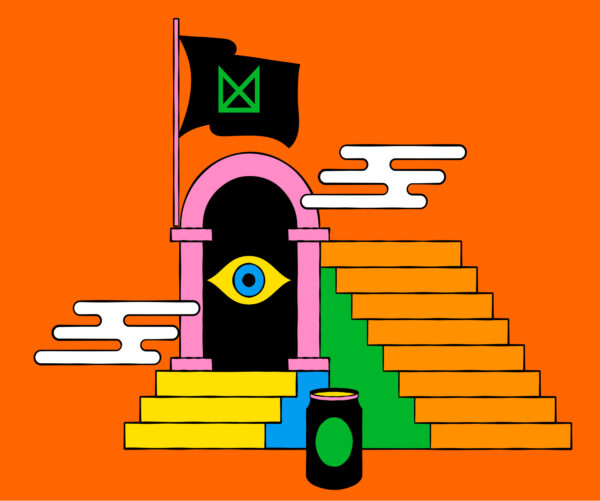Craig Drennen modifies critical modern paint protocol with some serious extracurricular counter-encryption at “The Suburban” in Milwaukee. He composes fresh content for the stylistic offspring of 20th century painting by tapping his memory and our collective history to de-stabilize and caricature formal art motifs. His stealth re-figuration has ritualistic and philosophical links. One is a 500 year old tradition of applying gold laquer onto fractured ceramic vessels. But Drennen, who pursues an interest in fragile declining culture, inverts the process. The artist wants to preserve the conceptually fractured condition of painting by using malleable, sometimes mischievous content with all of the abundant paradoxes of contemporaneity.

(Darlin’ Superfreak) oil & alkyd on canvas over panel 40-inch diameter, 2025
Note: The records referenced are Barbara Mandrell’s 1979 single Darling and Rick James’ 1981 single Super Freak. This painting is dedicated to the character of Merchant from Shakespeare’s Timon of Athens.
In Japan the subjects of impermanence and repair are the product of sheltering heritage and conserving craft that coexists with radical artforms. In Western contemporaneity, however, the embattled criteria of avant-gardism, still dis-allows frozen morphological ideals. The value of sustaining a rite remains underplayed. But Drennen seems inspired by psychological stressors dormant in the seismic present. Though configurations of the past persist in the artworld it’s more like crazing on thermally compromised ceramic platters than a ruptured mass, or a symbol of ruin to be dusted and massaged. Drennen exposes fresh breakages and seals the crevasses. Rather than driving anti-narratives he substitutes alternate psychological, historic, and autobiographic subject matter with picto-therapeutic rhythm.
Physically the exhibition titled “Craig Drennen, Five Paintings, Five Drawings” is constructed of a series of mixed media 20 by 20 in. circles, squares and X forms with colors akin to the industrial standards of cyan, magenta, yellow and black. Graphic design and formal abstract language patterns combine with arrhythmic Pop Art spaces. Black squares and Xs call attention to Suprematists who influenced artists’ place in the present as well as their interactive relationship between texts, walls and the built environment. Like the young Russians Drennen speaks to the psycho-social dimensions of the gallery and viewer’s occupation of it, how it’s a model for re-reading painting, and finding numerous links to biographies, cultural histories, and media later be codified and contextualized.

3 Paintings installation view
Painter/Chorus/Certain Senators (Eagleton), Painter/Chorus/Certain Senators (Shriver) Painter/Painter/CHIMNEY HOLE,
For the last two decades Drennen has examined obscure narratives on the periphery of popular culture. One emerges from the 16th century British sovereign and the other from a tenuous link in the Hollywood catalogue, each then covertly rehabilitated. A Shakespeare play, “Timon of Athens,” which is the basis of the Suburban Exhibition, is a shadowy Elizabethan drama that represents an uncharacteristic lemon in the playwright’s grand oeuvre. The play takes betrayal and misanthropy satirically and Drennen adopts cognitive impressions of the plays’ characters along with youthful reminiscences of the 20th century socio-political collapse.
At first glance two tilted McGovern/Eagelton presidential campaign buttons disrupt relatively conventional abstract compositions. The story behind the buttons, however, is as tragic and hollow as the fortunes of Timon used here seemingly, as classic symbol of lost cause.

Paintings and drawing Installation view
Much of Drennen’s work examines the opposite of heroic American art spectacles. So in 1972 a Democratic campaign’s mismanagement of a running mate’s mental health document became a spiraling political cautionary tale about the curiousness and absurdity of the “finger on the button” panic of electability. Encompassing the pictures are designs that nudge forsaken content into the front and center, providing new models for a text that comprises modernist formulae in spheres, cubes, grids, and primary colors – authoritative images fused with cold war ideology, tinged with secrecy, and defeated by indiscretion.
Contemporary artists interfere with form with a capital F. Artists like Drennen exploit the range that the hand, and studio labor in general, still have as they show how flexible and formidable slow graphics still are. He takes page flatness, para-illusions, and text and disturbs the logic of large narratives that dwell under formal tropes. His allegorical figures do have one relationship to avant-gardism….they imagine where paths between what art and life and private vs. public use to be. He jostles pictures from the rectangle, pries open academic vanity and replaces it with stress-free discretionary autonomy. He valorlizes semiotic distortions of secondary art sources and turns them into charismatic, dystopian furniture, as chill as DaDa.
- Sub-Rural #49, Caroline Kent - May 1, 2025
- Sub-Rural #48, Craig Drennen at The Suburban - April 2, 2025
- Sub-Rural #47 Dieter Roth at the MCA - March 3, 2025




